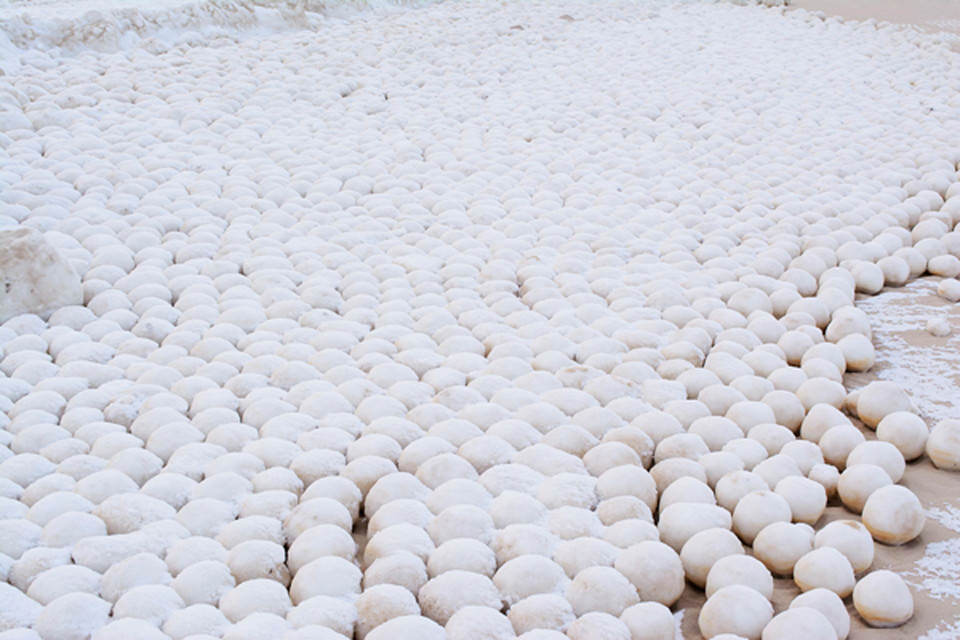
Thousands of natural snowballs have been formed on an 18-km stretch of a beach in the Gulf of Ob in northwest Siberia, puzzling the local people.
Villagers from Nyda, on the Yamal Peninsula just above the Arctic Circle, started noticing the snowballs at the end of October. Ever since, the beach has been covered.
Local resident Ekaterina Chernykh told the Siberian Times: “We have them only in one place. It’s as if someone spilled them. They are all of different sizes, from tennis balls to volleyball.
“We all were very surprised. Many people believed it only when they saw them with they own eyes. This has not happened previously. And there was not so much snow for them to form. It’s so interesting.”
Village administrator Valery Akulov said even the oldest residents had never witnessed the event, adding: “When the water in the gulf rose, it came into contact with the frost. The beach began to be covered with ice. Then the water began to slowly retreat, and the ice remained. Its pieces were rolling over in the wet sand, and turned into these balls.”
The formation of the snowballs was explained by Sergey Lisenkov, from the Arctic and Antarctic Research Institute (AARI): “It is a rare natural phenomenon,” he said. “As a rule, grease ice forms first, slush. And then a combination of the action of the wind, the outlines of the coastline, and the temperature, may lead to the formation of such balls.”
A similar event took place in Lake Michigan in 2014 during the height of the polar vortex. Images showed balls of ice washed up near the town of Glen Arbor.
Meteorologist Joe Charlevoix said: “When the water temperature on the Lake Michigan is just a little bit below freezing, so you get a small piece of ice that forms in the water and as waves move back and forth it adds additional water and freezes in layers. It gets bigger and bigger, and eventually you get big balls of ice that are pushed to the shore by the wind.”













